Over the last few months, we have been seeing international design trends mirror Indian concerns for upcycling and a focus on neutral, natural colours. Globally too, stone, especially marble is a favourite for its colour and textures, and it is often used in different ways — to create craft-forward pieces and monolithic forms.
In India, design studios have been using artisanal knowledge to create intricate inlays. Much of this was reflected at the recently concluded AD Design Show at the Karigar Pavilion, Mumbai, where Architectural Digest magazine had invited industry stars such as Vikas Soni, known for painting the interiors of Villa Palladio in Jaipur and Sonam Kapoor’s house in Mumbai. There were weavers from Kani Shawl Heritage, who set up a loom to fashion pashmina specimens in front of a curious audience.
But one of the popular showcases was an edit of 43 designers who work with different mediums, ranging from textiles and painting to metal work and pottery. Called ‘AD Discoveries’, it was spread across four rooms, and curated by interior stylist Samir Wadekar.
Komal Sharma, head of editorial content for AD notes, “The idea of discoveries was literally born from a section in the magazine called AD Discoveries, which has smaller stories about emerging brands, design news, and new launches.”
Wadekar was helped by an advisory board that consisted of B.V. Doshi’s granddaughter Khushnu Panthaki Hoof; co-founders of Kolkata-based gallery Experimenter, Prateek and Priyanka Raja; co-founders of Humming Tree, Arun Shekhar and Mohammed Afnan; interior designer Rajeev Saini; and Nisha Mathew Ghosh of architecture firm Mathew and Ghosh.
He notes, “For me, it was not about having the most recent pieces, but about showcasing what the brand is about or the brand’s aesthetic, or showing something that I thought people would find interesting.” Besides reaching out to designers (he credits Panthaki Hoof with being invaluable for her insights into Ahmedabad’s design scene and its textile artists), he also worked with some young brands such as Gradient India, Shed, Julia and Sita, and Studio Medium to commission custom works that he used to design four distinctive rooms. Hoof adds that she was keen to promote people who wouldn’t otherwise get a chance.
The challenge, Wadekar notes, was to create varied displays, which he managed by changing flooring, wall colours and displaying the work thematically.
We highlight five designers to have on your radar:
Araish Jaipur
Founded by Shivani Jadeja and Priyamvada Golcha, Araish Jaipur brings the traditional Rajasthani lime plaster technique to objects like vases and candles.

Shivani Jadeja and Priyamvada Golcha of Araish Jaipur
| Photo Credit:
Special arrangement
It’s no surprise that the production is in Jaipur and most of their designs are produced on order. Using natural dyes — such as palash flowers for yellow — they’ve honed a product list that’s easy to transport, given that most of their clientele are abroad. Products can be bought from their studio in Jaipur.
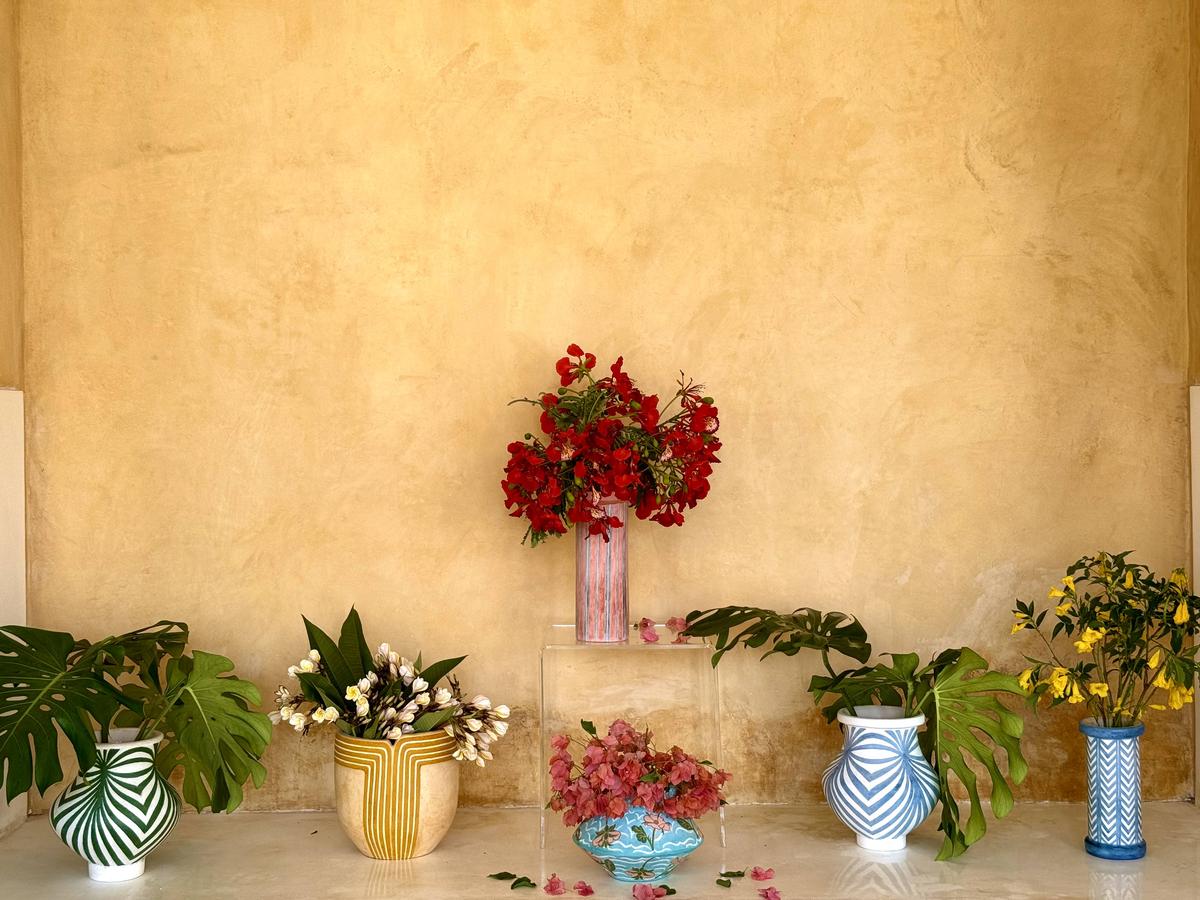
Gaurav Kanjerla, head of sales, explains that Golcha has always had craftsmen working to restore the 300-year-old home she resides in. Over three years of R&D, the duo has learned to take the lime plaster technique onto household articles.
Eikowa Studio
The journey from a gallery — and displaying others’ work — to creating her own, has been a fulfilling one for founder and creative head Vaishnavi Murali.
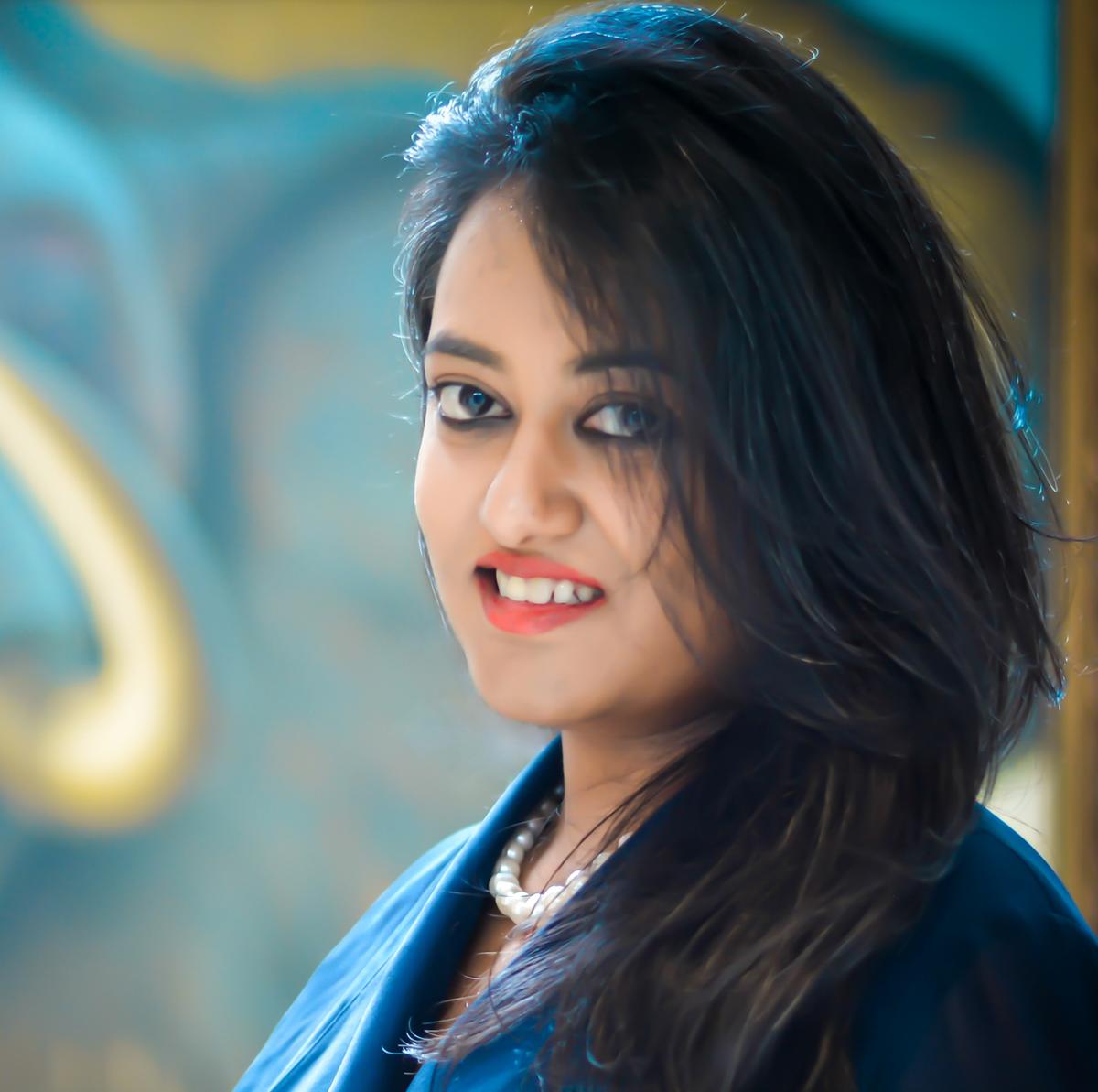
Vaishnavi Murali of Eikowa Studio
| Photo Credit:
Special arrangement
While she displayed a handmade brass-covered cupboard at the AD Design Show, Murali also works with concrete, paper, aluminium and other materials.
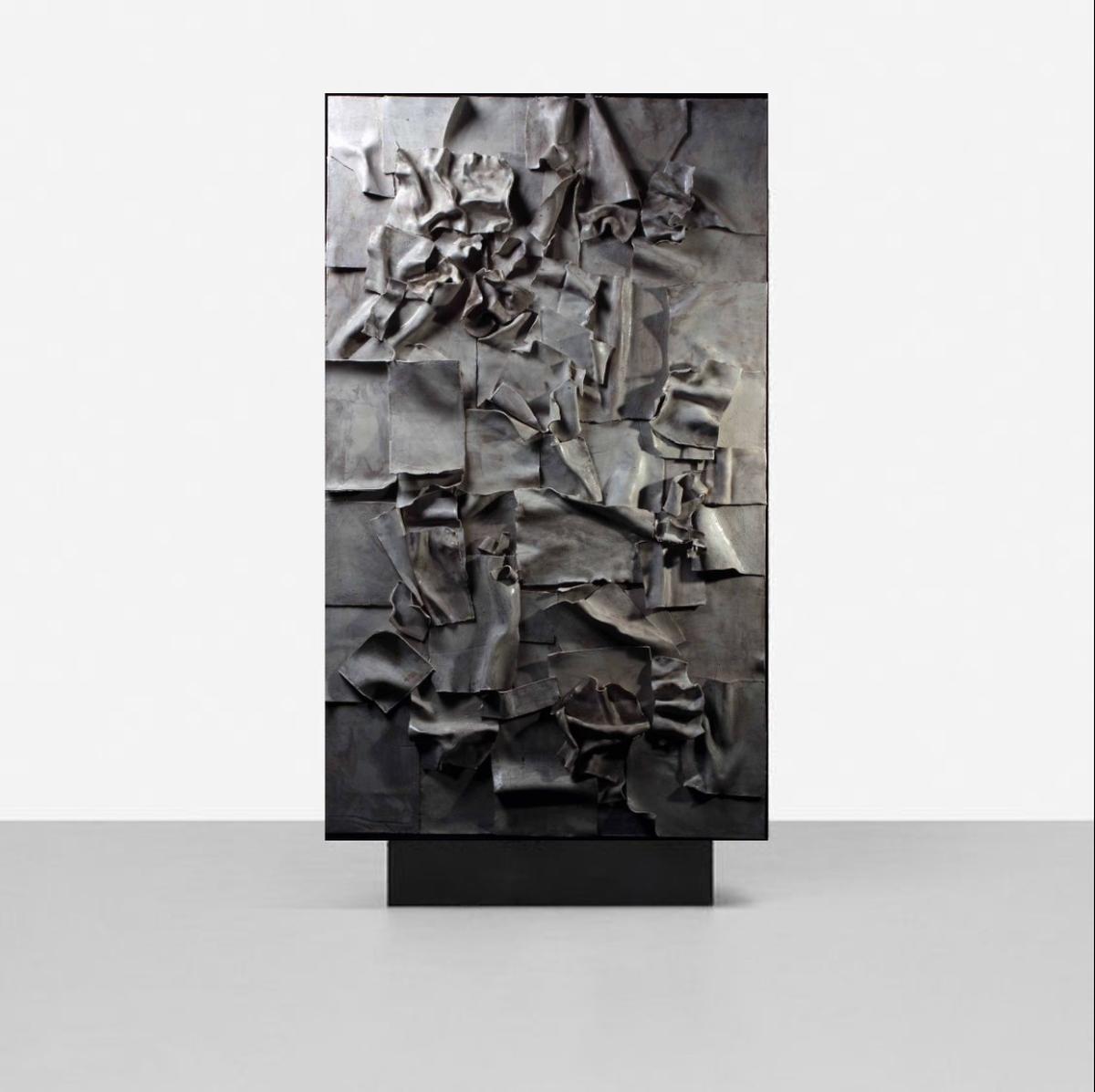
The studio was born out of necessity, creating customised artworks for the hotels and offices she consulted with. In the years since, she’s found that she has “passion in this space, and I got introduced to the world of craft that India has”. As a result, Eikowa now sees itself taking on a dual role, of promoting Indian artists, but also Indian crafts — across terracotta, ceramics, metalwork and more. They can be reached via Instagram @eikowa_studio
InOrdinary
Priyansha Jain, founder and creative director, states, “At InOrdinary, I’m interested in promoting functional art, which are one-of-a-kind functional objects.” She goes on, “We spend so much time with functional objects, so to find beauty in it and find meaning in it, seems like a good idea.”
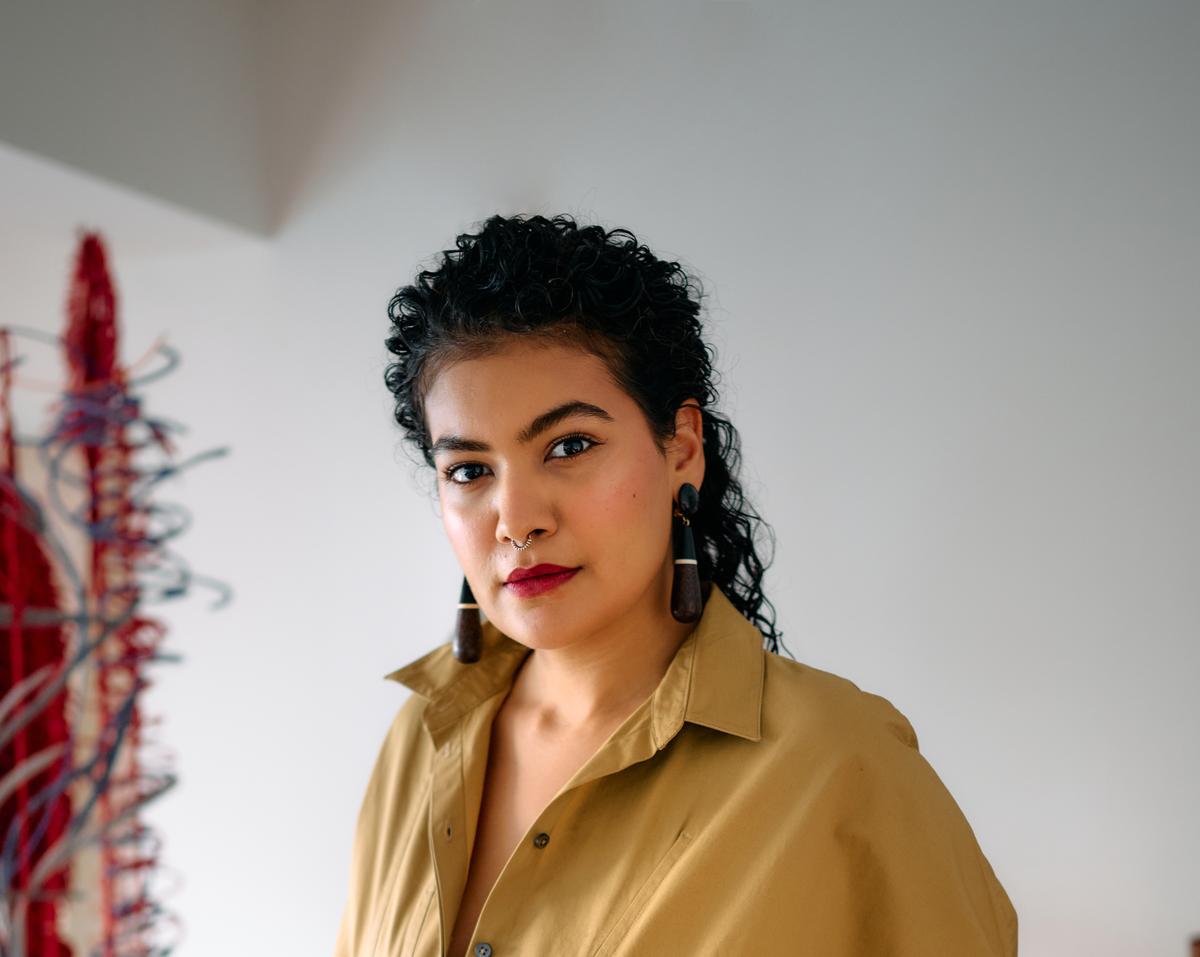
Priyansha Jain of InOrdinary
| Photo Credit:
Special arrangement
The daily display at the design show changed because, as Jain says, “It presented the nature of InOrdinary and finding new objects in the everyday.” So over three days, the brand showcased everything from cups and candles, to placemats and trays.
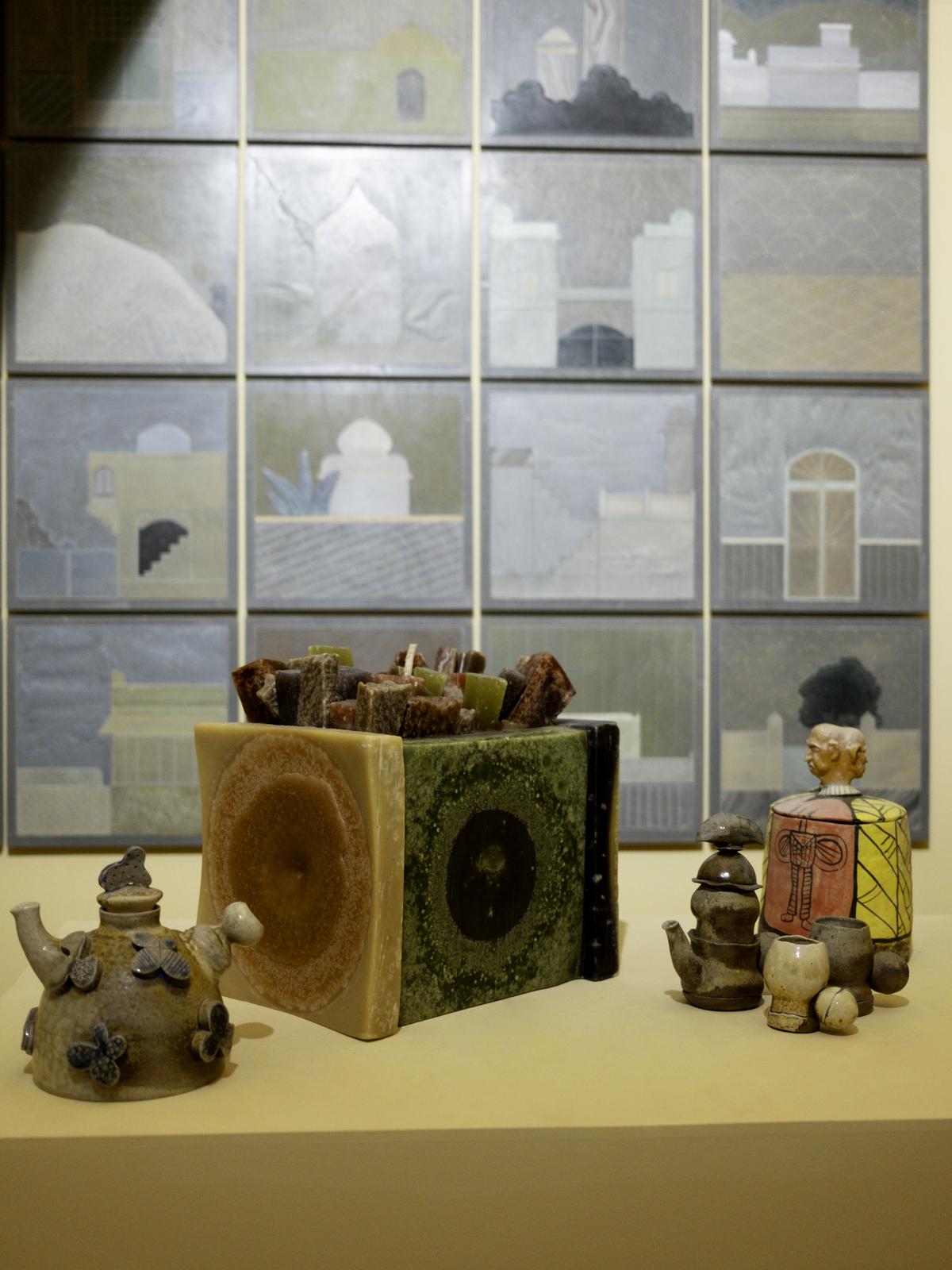
Working with some of India’s most interesting designers, InOrdinary encourages them to rethink each object.
inordinary.in
Studio Medium
Panthaki Hoof highlights this New Delhi-based textile brand as one that she was excited to introduce to the AD audience. Studio Medium was founded by Riddhi Jain, an NID graduate who works in apparel and home textiles.
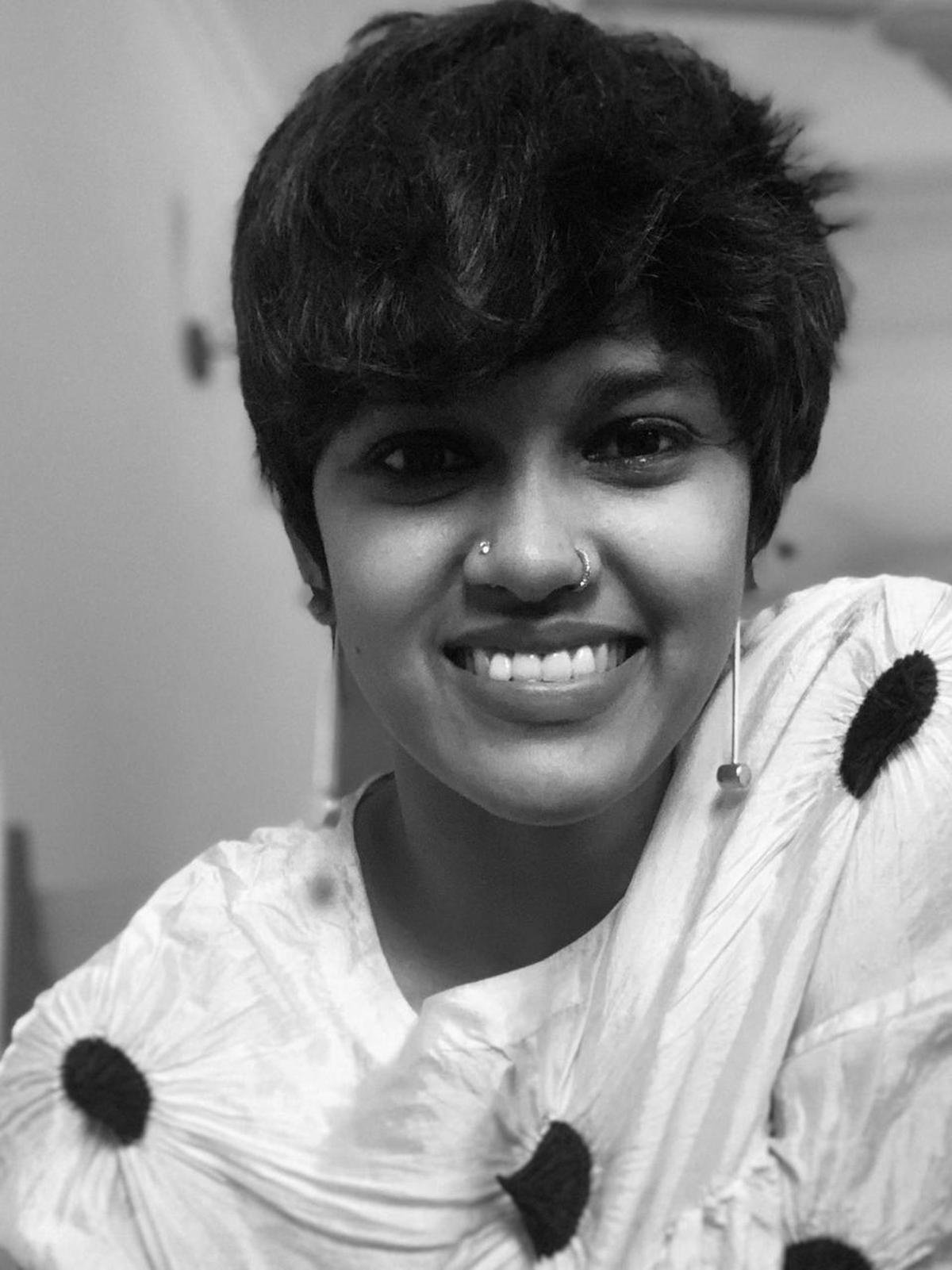
Riddhi Jain of Studio Medium
| Photo Credit:
Special arrangement
Alongside weavers, she takes traditional techniques and give them a contemporary design sense.
Detail on ‘The Saree’
| Photo Credit:
Special arrangement
‘The Saree’
| Photo Credit:
Special arrangement
For the show, she created a custom tapestry, titled ‘The Saree’, a triptych made up of three interconnected pieces — skirt, pleat and pallav. The work aims to translate a 3D garment into a flat 2D form and like a saree, is about 5.5m long.
studiomedium.in
Studio Avni
Avni Sejpal, a trained architect, started her studio in 2011. In the years since she’s displayed at London Design Week and SaloneSatellite.

Avni Sejpal of Studio Avni
| Photo Credit:
Studio Avni
The tables on display at the show made use of cork and rubber that was originally in her workshop “for anti-vibration and insulation purposes”, to create a series of designs across tables, lamps and even vases, which are available online at studioavni.com.
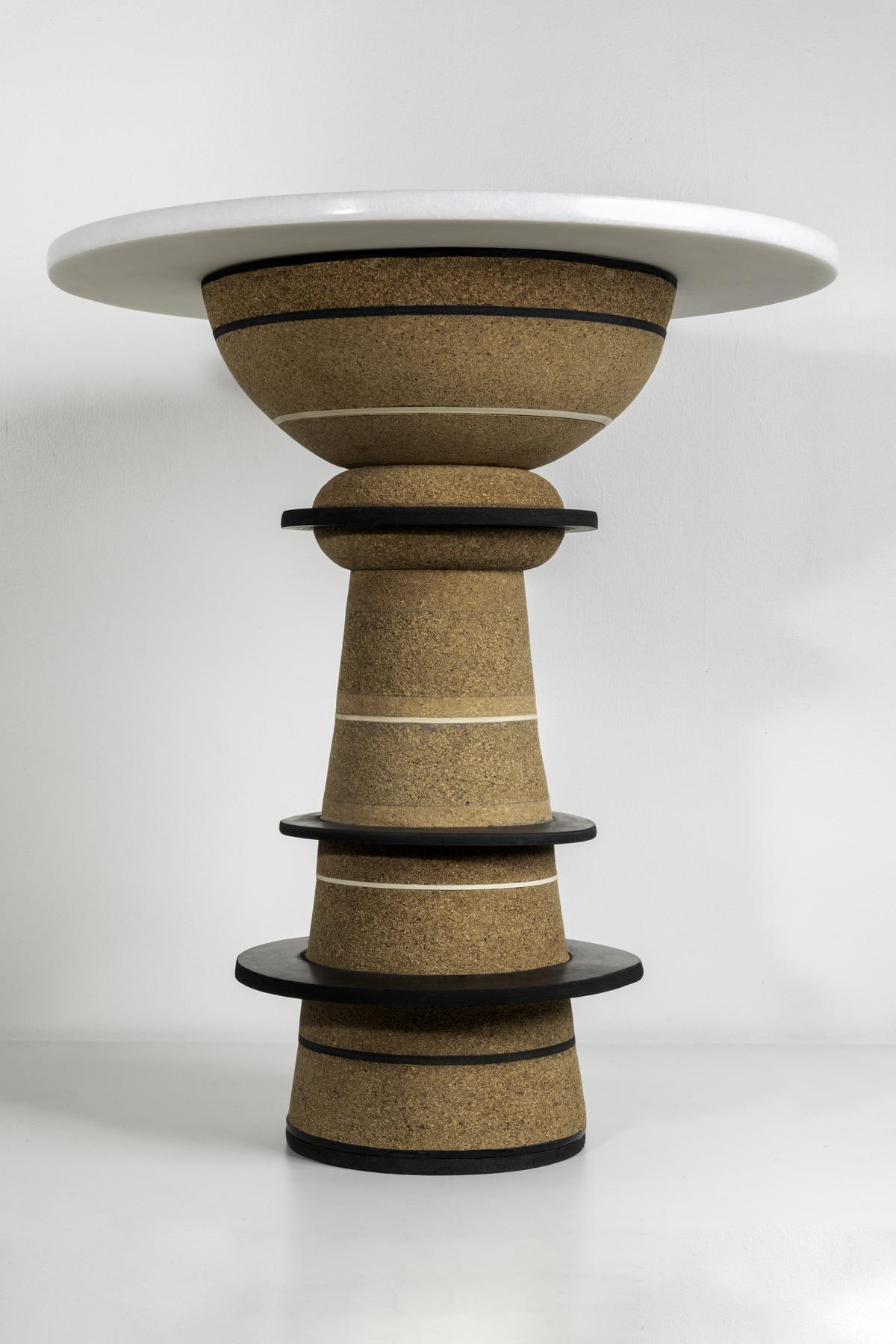
Sejpal notes, “Cork is sustainable, and the material in the studio was already recycled,” and she was using it differently once again. Currently, she’s working with an array of materials such as metal mesh, PVC, concrete and textiles.
The writer is based in Mumbai.
Published – October 04, 2024 04:20 pm IST





